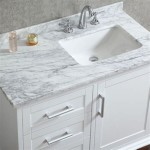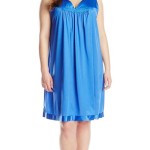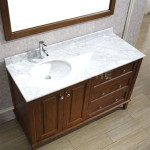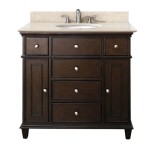Replacement Vanity Doors and Drawer Fronts: A Comprehensive Guide
The bathroom vanity serves as a focal point in most bathrooms, providing storage and contributing significantly to the overall aesthetic. Over time, vanity doors and drawer fronts can become worn, outdated, or damaged, detracting from the bathroom's appearance. Replacing the entire vanity can be a costly and disruptive undertaking. A more economical and less invasive alternative involves replacing only the doors and drawer fronts. This approach allows for a significant visual upgrade without the expense and hassle of a complete renovation.
This article provides a comprehensive guide to replacement vanity doors and drawer fronts, covering various aspects, including the benefits of replacement, material options, style considerations, measurement techniques, and installation procedures. Understanding these elements allows homeowners to make informed decisions and achieve a successful bathroom transformation.
Benefits of Replacing Vanity Doors and Drawer Fronts
Opting for replacement vanity doors and drawer fronts offers several advantages over replacing the entire vanity unit. Primarily, the cost savings are substantial. The cost of new doors and drawer fronts is significantly less than the price of a complete vanity, especially if the existing vanity carcass is structurally sound. This allows homeowners to allocate resources to other bathroom upgrades, such as new countertops, faucets, or lighting fixtures.
Another key benefit is the reduced disruption to the bathroom. Replacing the entire vanity involves disconnecting plumbing, removing the old unit, and installing the new one, which can take several days and require professional assistance. Replacing only the doors and drawer fronts is a much quicker and simpler process, often completed in a single day with minimal disruption. This is particularly advantageous for homeowners with busy schedules or those who want to avoid a prolonged renovation period.
Furthermore, replacement doors and drawer fronts offer a wide range of design possibilities. Homeowners can choose from an extensive selection of materials, styles, and finishes to create a custom look that complements their existing bathroom décor. This allows for personalization and the opportunity to update the bathroom's style without committing to a complete overhaul. For instance, a homeowner could transition from a traditional raised-panel door to a sleek, modern slab door, instantly changing the bathroom's character.
Material Options for Vanity Doors and Drawer Fronts
The choice of material plays a crucial role in the appearance, durability, and cost of replacement vanity doors and drawer fronts. Several materials are commonly used, each with its own unique properties and advantages.
Solid wood is a popular choice for its natural beauty, durability, and timeless appeal. Wood species like oak, maple, cherry, and walnut offer distinct grain patterns and color variations. Solid wood doors and drawer fronts can be stained or painted to achieve a desired finish. However, solid wood is susceptible to moisture damage if not properly sealed and maintained, making it less suitable for bathrooms with high humidity levels. Solid wood options typically come at a higher price point compared to other materials.
Medium-density fiberboard (MDF) is an engineered wood product that is made by breaking down hardwood or softwood residuals into wood fibers, often in a defibrator, combining it with wax and a resin binder, and forming panels by applying high temperature and pressure. MDF is a dense, stable material that is less prone to warping or cracking than solid wood. It provides a smooth surface for painting or applying veneers. MDF is often used for painted doors and drawer fronts because it allows for a flawless finish. It's also a more cost-effective option than solid wood, making it accessible to a wider range of budgets. However, MDF can be damaged by prolonged exposure to moisture, so proper sealing is essential.
Laminate doors and drawer fronts consist of a decorative laminate layer bonded to a substrate, typically particleboard or MDF. Laminates are available in a wide array of colors, patterns, and textures, including realistic wood grain imitations. They are highly resistant to scratches, stains, and moisture, making them a practical choice for bathroom vanities. Laminate options are generally less expensive than solid wood or MDF with a high-end finish. However, laminate edges can be susceptible to chipping if not properly sealed, and repairs can be difficult to execute seamlessly.
Thermofoil doors and drawer fronts are made by wrapping MDF with a thin layer of vinyl using heat and pressure. Thermofoil provides a seamless, durable finish that is resistant to moisture and scratches. It is available in a variety of colors and styles, including raised-panel designs. Thermofoil is a relatively inexpensive option, but it can be susceptible to heat damage and may not be as durable as solid wood or laminate. Peeling is a potential issue if the thermofoil is not properly bonded to the MDF substrate.
Styles and Design Considerations
The style of vanity doors and drawer fronts significantly impacts the overall look and feel of the bathroom. Selecting a style that complements the existing décor and reflects personal preferences is essential. There are numerous styles to choose from, ranging from traditional to contemporary.
Raised-panel doors feature a central panel that is raised above the surrounding frame. This style is often associated with traditional or farmhouse-style bathrooms. The panels can be simple or intricately detailed, adding visual interest and depth. Raised-panel doors are typically made from solid wood or MDF with a wood veneer.
Shaker-style doors are characterized by a simple, clean design with a flat recessed panel and a square edge. This style is versatile and can work well in both traditional and contemporary bathrooms. Shaker doors are often made from solid wood or MDF and can be painted or stained. The simplicity of the Shaker style makes it a popular choice for its timeless appeal.
Slab doors are flat, frameless doors that offer a sleek, minimalist look. This style is ideal for modern or contemporary bathrooms. Slab doors can be made from MDF, laminate, or thermofoil. They are available in a wide range of colors and finishes, including high-gloss options.
Glass-front doors feature a glass panel in the center, allowing for visual display of items stored inside the vanity. Glass-front doors can add elegance and sophistication to a bathroom. Different types of glass can be used, such as clear glass, frosted glass, or textured glass. The frames can be made from wood, metal, or composite materials. Glass-front doors are often used in combination with other door styles to create a more customized look.
Beyond the basic style, other design considerations include edge profiles, hardware selection, and finish options. Edge profiles can be square, rounded, or beveled, adding subtle detail to the doors and drawer fronts. Hardware, such as knobs and pulls, can significantly impact the overall aesthetic. Finishes can range from painted to stained, glazed, or distressed, depending on the desired look. Careful consideration of these details ensures a cohesive and visually appealing bathroom design.
Measuring for Replacement Doors and Drawer Fronts
Accurate measurements are essential for a successful replacement project. Incorrect measurements can result in doors and drawer fronts that do not fit properly, leading to frustration and wasted materials.
Before taking measurements, it is important to determine whether the existing doors and drawer fronts are overlay or inset. Overlay doors cover part of the cabinet frame, while inset doors fit flush within the frame opening. The measurement process differs slightly depending on the door type. For overlay doors, measure the width and height of the existing door. For inset doors, measure the opening of the cabinet frame where the door will fit.
Use a metal measuring tape for accurate measurements. Measure each door and drawer front individually, as slight variations in size may exist. Record the measurements in a clear and organized manner. It is recommended to measure each dimension at least twice to ensure accuracy. If the measurements are not exact, round up to the nearest 1/16 inch.
In addition to the overall dimensions, also measure the hinge bore diameter and location, as well as the pull or knob hole spacing, if applicable. This information is needed to ensure that the new doors and drawer fronts will align properly with the existing hinges and hardware. Taking photographs of the hinge and hardware locations can also be helpful. If replacing hinges, it's important to note the type (e.g., concealed, face-frame) and any specific model numbers for compatibility.
When ordering replacement doors and drawer fronts online or from a manufacturer, provide all the necessary measurements and specifications. Double-check the order before submitting it to ensure accuracy. It is often beneficial to order a sample door or drawer front to confirm the color, style, and fit before placing a large order.
Installation Procedures
Installing replacement vanity doors and drawer fronts is a relatively straightforward process that most homeowners can complete with basic tools and skills. The specific steps may vary depending on the door style and hardware, but the general procedure is outlined below.
Begin by removing the existing doors and drawer fronts. Use a screwdriver to detach the hinges from the cabinet frame. If the hinges are corroded or difficult to remove, use a penetrating oil to loosen them. Carefully remove any existing hardware, such as knobs or pulls. Clean the cabinet frames thoroughly to remove any dust or debris.
Install the hinges on the new doors. Align the hinges with the pre-drilled holes and secure them with screws. Ensure that the hinges are properly aligned so that the doors will open and close smoothly. If new hinges are being used, follow the manufacturer's instructions for installation. Concealed hinges often require a specific type of mounting plate that attaches to the cabinet frame.
Attach the doors to the cabinet frame. Align the hinges on the door with the corresponding mounting plates on the frame. Secure the hinges with screws. Test the door to ensure that it opens and closes properly. If the door is not aligned correctly, adjust the hinge screws until the door is properly aligned.
Install the drawer fronts. Align the drawer front with the drawer box and secure it with screws or adhesive. Ensure that the drawer front is flush with the drawer box and that it is properly aligned with the other drawer fronts. Install the hardware, such as knobs or pulls, on the doors and drawer fronts. Align the hardware with the pre-drilled holes and secure it with screws. Tighten all screws to ensure that the doors and drawer fronts are securely attached.
After installation, inspect the doors and drawer fronts for any imperfections or misalignments. Adjust the hinges or screws as needed to ensure that the doors and drawer fronts operate smoothly and look aesthetically pleasing. Clean the doors and drawer fronts with a mild detergent and water. Apply a protective finish, such as a wood polish or sealant, to protect the doors and drawer fronts from moisture and damage.

Bathroom Cabinet Doors Replacements For Vanities Nieu

How To Update An Old Vanity With New Drawers Doors And Paint Southern Hospitality

Update Your Bathroom Vanity With New Cabinet Doors The Handyman S Daughter

Update Your Bathroom Vanity With New Cabinet Doors The Handyman S Daughter

Update Your Bathroom Vanity With New Cabinet Doors The Handyman S Daughter

4 Tips For Refacing Bathroom Vanity Doors Cabinet Now

Fast Cabinet Doors Custom Replacement For Kitchen Cabinets Cupboards

How To Reface Your Cabinet Honey Built Home

Kitchen Cabinet Makeover N Hance

Replacement Cabinet Doors And Drawer Fronts For Your Kitchen Now







